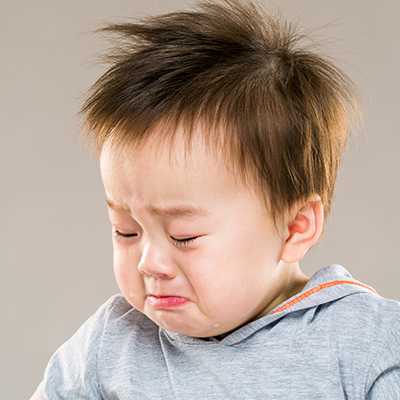Supporting a Grieving Toddler (1-2 Years)
 Understanding of Death
Understanding of Death
Toddlers experience death as a separation and disruption of routine. They have little understanding of the word “death.” Their sense of time is very limited.
How to Help a Toddler
Keep their routine as normal as possible. Meet their needs promptly and gently. (Feeding, diapers, naps, and snuggles) This helps them feel safe. Toddlers may be upset by a sudden change in rules. Keep your rules for behavior the same. Your toddler may experience some regression. Be patient, gentle, and consistent to help them get back on track.
Avoid phrases such as “gone away,” “sleeping,” or “in a better place.” These sound gentler to adult ears. But they can confuse young children. Use the words “death,” “dying,” and “dead.” Toddlers need to hear these words. Give simple explanations of what they mean. “Dead means that her body does not work anymore. Her heart does not beat. She does not breathe.” You may need to repeat this many times over the next few weeks. When talking about burial or cremation, use simple language. Be clear about what happens to the person, and what happens to the body. Avoid saying “We will bury Dad.” Instead, say “We will bury Dad’s body.”
Play is a very important part of grieving. Playing helps toddlers cope. They will have brief moments of sadness, anger, and other emotions. Between these moments, they will play. Play helps toddlers heal. This is normal and healthy for a toddler.
Signs of Poor Coping
You may see changes in the way your toddler eats or sleeps. You may also notice more tantrums. If you are concerned, call your child’s doctor. Play therapy can also help grieving toddlers.
Memory Making & Keepsakes
These are personal items that children can hold. They help children to feel closer to the person who died. With toddlers, always keep safety in mind. Small items can be choking hazards. Save fragile or small items for when the child is older.
- Photos – Make a book with photos of their loved one.
- Special items – Children may enjoy holding something from their loved one. For example a pillow, toy, or other soft item.
- Arts and crafts made with their loved one’s fingerprints or lock of hair.
- Recordable story books – Some children’s books include a built in microphone. You can record a loved one reading the story. Play it for the toddler to hear their voice. (Read the instructions carefully!)
- Letters from a loved one – If there is time, a loved one can create messages for the future. For example “a letter for my daughter’s graduation.” Or “a video for my little brother’s 10th birthday.” These can be done as letters or drawings. Videos are good, too.
Resources
- No Matter What by Debi Gliori
This board book tells the story of family love. Together or apart, the love you share with a child lasts forever. Toddlers may not understand the words, but adults may find comfort in reading this book to them. - I Miss You: A First Look at Death by Pat Thomas
This book offers a gentle look at death. It talks about common questions that young children ask. - The Goodbye Book by Todd Parr
This book talks about feelings children may have when someone dies. It is honest, gentle, and helps with healing. - Sesame Street in Communities - Grief
- Center for Loss & Life Transition
- Dougy Center